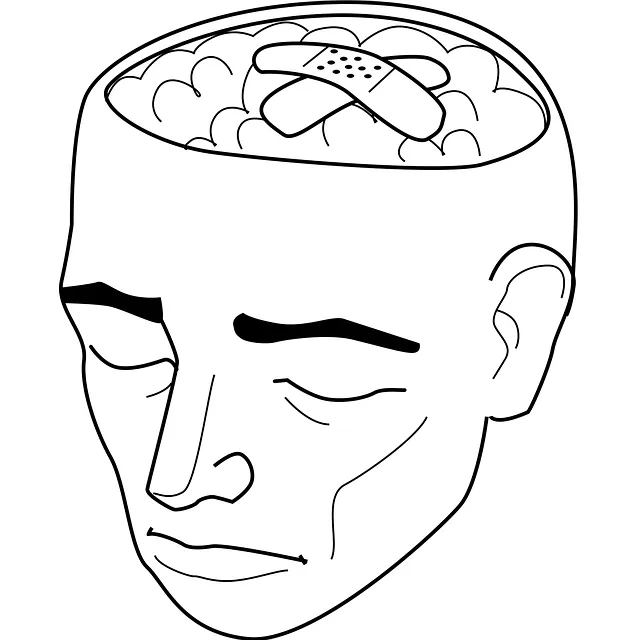Kaiser Permanente's behavioral health center in Parker offers comprehensive mental wellness self-assessment tools, leveraging evidence-based practices and user-centric design. These tools go beyond traditional diagnostics by assessing emotional regulation, coping strategies, social connections, and life stressors, providing a holistic understanding of mental health. The center's expertise contributes to Parker's Framework, guiding individuals through self-discovery, resilience, and crisis intervention. By integrating validated research, community outreach, and user-friendly interfaces, Kaiser Permanente revolutionizes mental health screening, enhancing accessibility for diverse populations while empowering both patients and staff with improved well-being outcomes.
Mental wellness self-assessment tools are gaining prominence in healthcare, enabling individuals to proactively manage their mental health. This article explores the development of such tools, drawing insights from established models like Kaiser Permanente’s approach and Parker’s Framework. We delve into integrating evidence-based practices, designing user-friendly interfaces, and implementing these tools at behavioral health centers, as seen with Kaiser Permanente centers. By combining scientific rigor and user experience design, these assessments empower individuals to take charge of their mental wellness.
- Understanding Mental Wellness Self-Assessment: The Kaiser Permanente Approach
- Identifying Key Areas for Assessment: Parker's Framework
- Integrating Evidence-Based Tools and Techniques
- User Experience Design Considerations for Effective Self-Assessments
- Implementation, Feedback, and Continuous Improvement at Behavioral Health Centers
Understanding Mental Wellness Self-Assessment: The Kaiser Permanente Approach

Mental wellness self-assessment tools play a pivotal role in empowering individuals to take charge of their emotional well-being. One esteemed organization that has made significant strides in this area is Kaiser Permanente, a leading health care provider with its behavioral health centers serving as beacons of hope and healing. Their approach to mental wellness assessment involves a comprehensive evaluation that transcends mere symptoms, delving into the individual’s overall psychological state and life circumstances.
At the heart of Kaiser Permanente’s methodology lies a focus on Empathy Building Strategies and Coping Skills Development. Through interactive questionnaires and one-on-one sessions, their trained professionals guide individuals through a journey of self-discovery, fostering a deeper understanding of their mental wellness landscape. This holistic process not only identifies areas of concern but also equips people with the tools to navigate challenges, promoting long-term mental wellness and resilience. The Parker behavioral health center, a testament to Kaiser Permanente’s commitment, exemplifies this patient-centric approach, ensuring that each individual receives tailored support for their unique mental health journey.
Identifying Key Areas for Assessment: Parker's Framework

Identifying Key Areas for Assessment: Parker’s Framework draws on years of research and expertise from established institutions like the Kaiser Permanente behavioral health center. This framework provides a structured approach to understanding an individual’s mental wellness, focusing on several critical dimensions. By examining factors such as emotional regulation, coping mechanisms, social connections, and life stressors, it offers a holistic perspective that goes beyond traditional diagnostic criteria.
This method incorporates insights from various disciplines, including psychology, sociology, and neuroscience, to create a comprehensive tool for self-assessment. It encourages individuals to reflect on their Resilience Building capabilities, assess the effectiveness of Crisis Intervention Guidance they’ve received, and evaluate their Self-Care Practices. This introspective process empowers people to take charge of their mental health and make informed decisions about their well-being.
Integrating Evidence-Based Tools and Techniques

Integrating Evidence-Based Tools and Techniques is a pivotal step in developing comprehensive self-assessment tools for mental wellness. By drawing from the expertise of renowned institutions like the Kaiser Permanente behavioral health center in Parker, creators can ensure that the tools are grounded in scientific research and clinical best practices. This approach leverages validated methods to accurately assess various aspects of mental health, such as stress management, emotional regulation, and resilience.
The Community Outreach Program Implementation and Mental Health Education Programs Design, inspired by organizations like Kaiser Permanente, play a crucial role in promoting inner strength development. These programs aim to educate individuals on recognizing their mental wellness states, fostering self-care practices, and providing early interventions. By combining evidence-based techniques with community engagement strategies, the tools can effectively cater to diverse populations, enhancing overall mental health awareness and accessibility to care.
User Experience Design Considerations for Effective Self-Assessments

Developing a mental wellness self-assessment tool requires careful consideration of user experience (UX) design to ensure effectiveness and engagement. At the Kaiser Permanente behavioral health center in Parker, designers focus on creating intuitive interfaces that guide users through assessment processes, fostering open communication and honest reflection. This involves employing simple language, clear instructions, and a user-friendly layout to minimize confusion and promote a non-judgmental environment, crucial for encouraging individuals to seek mental health awareness and potentially access trauma support services.
Effective self-assessment tools should incorporate interactive elements, visual cues, and regular check-ins to enhance user engagement. Communication strategies can be integrated seamlessly through pop-up boxes or sidebars that offer definitions, provide context, or prompt users to elaborate on their responses. By balancing assessment rigor with a pleasant UX, these tools have the potential to revolutionize mental health screening, making it more accessible and appealing, especially for younger demographics accustomed to digital interactions.
Implementation, Feedback, and Continuous Improvement at Behavioral Health Centers

At Kaiser Permanente behavioral health centers in Parker, implementation of self-assessment tools for mental wellness is a strategic step toward fostering better patient outcomes and employee satisfaction. These tools are designed to encourage proactive monitoring of mental health, facilitating early intervention and personalized care plans. The process begins with training staff on the use of the assessments, ensuring they can accurately interpret results and offer guidance appropriately. This involves teaching not just the technical aspects but also empathy building strategies that make interactions more patient-centric.
Feedback is integral to the continuous improvement of these self-assessment tools. Patients’ responses provide valuable insights into the effectiveness of various interventions, while staff feedback helps identify areas where improvements can be made. By integrating this feedback loop, centers like Kaiser Permanente Parker can adapt their programs, ensuring they align with the evolving needs of their clientele and remain effective in burnout prevention. Furthermore, by encouraging positive thinking and resilience through these assessments, the centers aim to create a more supportive and healthy environment for both patients and staff.
The development of mental wellness self-assessment tools, as demonstrated by Kaiser Permanente’s approach and enhanced by Parker’s Framework, offers a promising strategy for behavioral health centers. By integrating evidence-based techniques and prioritizing user experience design, these assessments can effectively support individuals in understanding their mental wellness. As seen in the successful implementation at Kaiser Permanente behavioral health centers, continuous improvement through feedback mechanisms ensures that these tools remain relevant and impactful. This strategic approach not only empowers individuals to take charge of their mental health but also provides healthcare professionals with valuable insights for personalized care.






